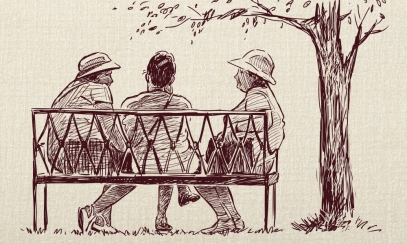
Via Fidelis: The Paschal Mystery Part 2: The resurrection and ascension of Jesus
Our God is a God of the unexpected. He makes the weak strong. He makes the foolish wise. He enriches the poor. He embraces the outcast. But in his most spectacular and significant reversal of fortune, he brings life out of death itself, transforming the ultimate defeat into the ultimate victory.
Our God is a God of the unexpected. He makes the weak strong. He makes the foolish wise. He enriches the poor. He embraces the outcast. But in his most spectacular and significant reversal of fortune, he brings life out of death itself, transforming the ultimate defeat into the ultimate victory.
With this year dedicated to evangelization and our response to the bishop’s call to Proclaim the Faith, we have committed this space to the kerygma, the Greek word for “proclamation.” It is the announcement of the Good News (Gospel) of the salvation of the world in Jesus Christ. We have been unpacking the elements of the kerygma, which basically tells the story of salvation progressively.
We started with God’s loving creation, a love that endures through our failure in sin. In fact, God loves the world so much that he entered it as one of us, fulfilling all that it means to be human — even embracing death. Jesus’ death has been understood throughout Christian history as his full sacrificial gift of himself. This is the perfect sacrifice on account of our sin, overcoming a separation between God and man that we never could on our own.
There is a reason our primary day of worship is Sunday, the Lord’s Day, and not Friday (the day of Christ’s passion and death) or the traditional Jewish Sabbath on Saturday. At the heart of our worship, we celebrate the day of the Resurrection, because the Resurrection lies at the heart of the human story. It brings about a New Creation, not obliterating but transforming the original creation. Salvation is not only a restoration of the relationship with God that humanity had before sin — the Good News gets even better.
It is important to understand that Jesus’ resurrection did not just confirm everything the apostles and the early Church believed about Christ. It certainly did that, but it did more. Remember, Jesus is united to us through his human nature because of the Incarnation. In his person, he unites humanity and divinity. This, of course, is what allows his death to be a sacrifice, an offering, on our behalf. Because of this union with our humanity, Jesus is also able to transform death into something life-giving. In the death of Christ, death itself dies and gives way to resurrection. God always does more.
The Good News for us is that Jesus’ resurrection is not just for Jesus. Because he rises in his humanity, united to our humanity by nature, we are now offered newness of life in him. We enter this newness by uniting ourselves to the Paschal mystery in baptism, dying and rising with Christ. This allows us to become God’s adopted children. In the New Creation brought about by the Resurrection, we are now offered a deeper relationship with God than humanity had at the time of creation. Resurrection is not mere resuscitation. It is a fundamental elevation and transformation.
The Resurrection appearances give us a glimpse into this reality. Lest we be tempted to see in the resurrection a disconnection between Jesus and the rest of humanity — an undoing of the Incarnation — the resurrection appearances in the Gospel make it quite clear that Jesus is raised in his body: He eats with his disciples, and Thomas can touch the wounds in Jesus’ body. This means that the offer of salvation that Christ gives us is that of a real, bodily resurrection. There is continuity with pre-resurrection humanity. Yet, Christ’s body is also different and in a new, glorified state. He is not always immediately recognized, and he enters locked rooms, presumably walking through doors. The Gospel accounts are pointing us toward the transformation that Resurrection brings.
Something new is taking place in the Paschal mystery. And the other piece of the Paschal mystery that makes this offer of salvation so profound and brings it fully to fruition is Jesus’ ascension. The Ascension is often something we overlook as an afterthought or a dramatic sequence where the mysterious hero of the story disappears as suddenly as he appeared.
That is not what happens at the Ascension. Yes, Jesus returns to dwell with the Father. But there is one very important detail that we cannot forget: He does so with his full human nature, including his body. Because his human nature is our human nature, he opens to us a new possibility of intimate communion, the close relationship that is the life of the Trinity itself. Because of the Paschal mystery of the Incarnate Son, humanity is offered a way to share in God’s life of love.
Michael Martocchio, Ph.D., is the secretary of discipleship and the director of the Office of Catechesis and Christian Initiation. Email him at mmartocchio@charlestondiocese.org.



